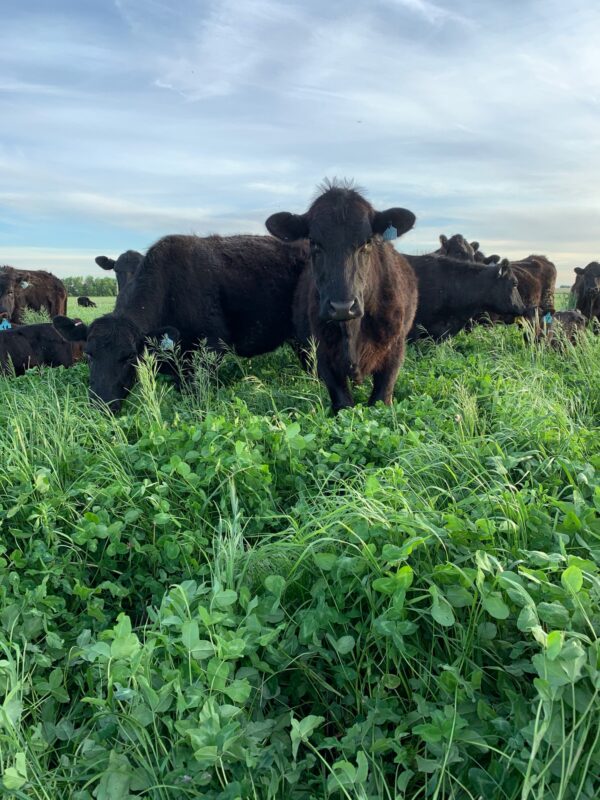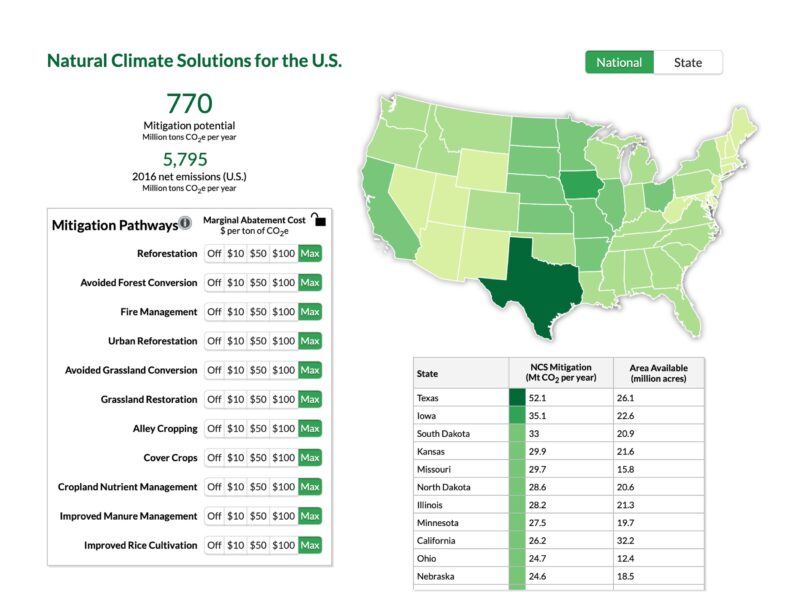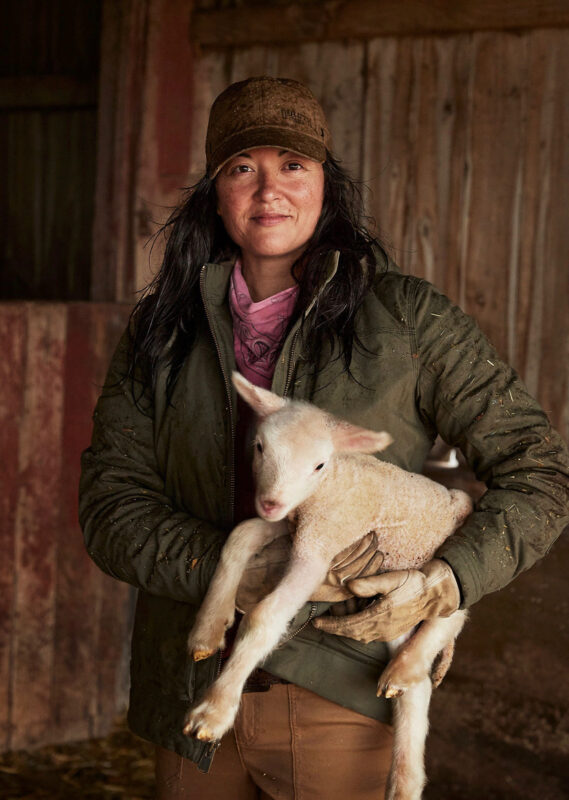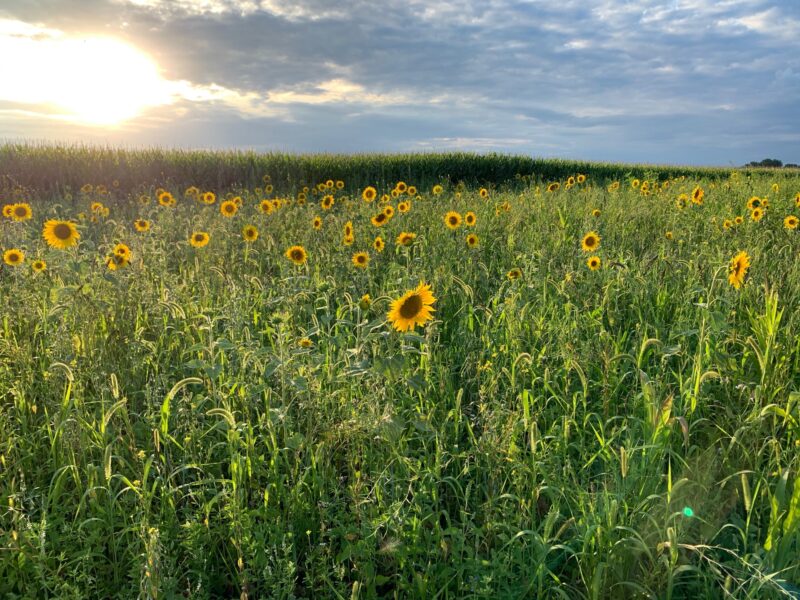Wendy Johnson recently presented at the 2022 Sustainable Farming Association Annual Conference.
Wendy Johnson is a farmer and climate land leader stewarding land that is the ancestral home of the Ioway, Wahpeton, Oceti Sakowin Sioux, Sauk, Meskwaki, and Winnebago peoples. Wendy’s relationship with this land goes back to her great-grandparents, German immigrants who after years of tenant farming purchased 200 acres in the 1940s. Wendy’s grandparents and parents grew the farm to its current size, around 1,100 acres of conventionally farmed corn, soybeans, small grains, and hay. Wendy grew up on the farm, and after leaving for college and a career in the fashion industry, she and her husband returned to the farm in 2010 and began learning to farm.
Today Wendy farms with her parents, husband, and daughter, and the original family farm has branched into two farms, Center View Farms and Jóia Food Farm, that are both responding to climate change and investing in ecosystem services while continuing the hard work of building viable businesses.
Center View Farms continues to provide the main livelihood for Wendy’s aging parents and her family and is on a long-term path from conventionally farmed row crops to more diverse grains with integrated livestock and ultimately organic with no tillage. Meanwhile, Jóia Food Farm has entered an agroecological future as a certified organic farm with a long rotation including pasture, small grains, corn, and soybeans. The farm also raises sheep and lamb, pigs, poultry, and some cattle for direct-to-consumer and wholesale markets, and grows trees and shrubs with edible nuts and fruits.
Jóia Food Farm serves as an incubator: “On a smaller scale we can learn what has potential to be profitable and beneficial on a larger scale without taking huge financial risks.” Through Jóia Food Farm, Wendy can also observe firsthand the ecosystem services they’re exploring and envision the long-term potential. She’s starting to see major benefits, including slow growth profitability — and at the same time, she says, “Agroecological landscapes do not provide short-term financial or ecological successes, but it’s the long-term successes that are most relevant. And remind us that we are in this for the long haul.”

If Wendy was solely seeking to increase profit, she’d be taking different actions on the Jóia Food Farm land: “This year I should till up half of our perennial acres and plant corn and soybeans. I could be contracting them today for organic prices at $40 bushel beans and $10 bushel corn, and short term I’d be making a lot more profit by doing this — but something stops me: this internal drive to store carbon and use animals to restore, regenerate and build soil for the long term.”
Wendy acknowledges the privilege that accompanies not feeling forced to make these decisions of profit over planet, and she envisions a future when these decisions are easier at all scales and when more farmers can see and take a viable path out of “the annual grain production hamster wheel” of half the acres in soybeans and the other half in corn. “What a difference it would make in water quality, air quality, fossil fuel reduction, regional and local food growing, and the growth of rural communities if animals on the land were part of this equation, and perennial grains like kernza were part of the rotation, and more diversity was valued, and more people could farm, and more people could eat from most farms. This is what I will spend my lifetime working toward.”
Iowa is one of the most ecologically altered places in the world — and also one of the highest potential U.S. states for climate mitigation through natural solutions like improving soil health and protecting grasslands to increase carbon storage and reduce greenhouse gas pollution.
 Source: https://www.nature.org/en-us/what-we-do/our-insights/perspectives/a-natural-path-for-u-s-climate-action/
Source: https://www.nature.org/en-us/what-we-do/our-insights/perspectives/a-natural-path-for-u-s-climate-action/
What does this look like in action? Wendy describes Jóia Food Farm as “an oasis in a sea of corn and soybeans. We’ve planted thousands of trees and bushes. We have transitioned tillable corn acres to perennial pastures that are establishing silvopasture. We use adaptive grazing that helps strengthen and lengthen the grazing season as well as increase herd health. We are restoring the riparian area, propagating and planting trees for cleaner water and more stabilized stream banks. We invite grassland birds to nest by not mowing pastures for winter hay until after nesting bird season ends. And we’re planting kernza as a transition to organic perennial crop.”
“In the last five years since we started this resiliency transition, we see it’s working. Our animals have never been healthier because the soil biology beneath them is increasing. Water-holding capacity has increased. We see continued plant growth in pastures during drought. Heavy rains are absorbed quickly. The increase in wildlife provides the signs that we are headed in the right direction. Today the farmstead is surrounded by perennials for the first time in over 70 years. And we have created our very own resilient microclimate.”

But even as Wendy and her family prioritize their values and use their resources to pursue an agroecological future for the land, they are still in the business of farming, and the current U.S. agriculture system is still heavily swung toward incentivizing overproduction of corn and soybeans. “How are farmers at any scale who produce valuable ecosystem services — helping offset carbon emissions by planting trees, grazing grasslands, protecting and establishing riparian areas and wetlands, growing food for our communities — how do we make money and stay in the business of farming, doing what is right for the planet? If the taxpayers’ money is going to support agriculture, it’s these ecosystem services that should be paid for, not the crop loss and the outright gambling that goes on in the crop insurance commodity world.”
Wendy wants a fair playing field that values the ecosystem services farms like Jóia Food Farm are providing. Wendy closed her presentation at the 2022 Sustainable Farming Association Annual Conference with this vision: “I hope that one day a fair and equitable price is paid across the board if you decide to plant and harvest oats, alfalfa, corn, or kernza, or graze sheep, pigs, cattle, or chickens on grasslands, or grow trees and create woodlands. I hope that one day there will be incentives for retiring farmers or non-farming landowners to sell their land at a fair and equitable price to farmers who will grow food and fiber for their local communities and get paid well for their products so that they can actually make a living farming.

“Will this end climate change? No, but we can still mitigate the effects that are going to have dire consequences. I stress to consumers worldwide when making buying choices — consider how much fossil fuel it took to create, build, grow, make, and distribute that product. I’ll give you a hint: local and regional is almost always better. We can be empowered to make these landscape changes and feed ourselves and our communities. We can make changes in our lifestyle to use less fossil fuels. We can support local and regional food growers and systems and come closer to where our food comes from. We can support BIPOC farmers, connecting them to land and resources. We can prioritize everything in our lives to ensure that the next generations can live in a stable, safe, and healthy world. We can be the change, and it starts with you and me.”